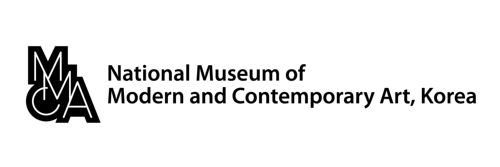May 22–September 26, 2021
30 Samcheong-ro, Jongno-gu
03062 Seoul
South Korea
Hours: Monday–Sunday 10am–6pm,
Wednesday and Saturday 10am–9pm
T +82 2 3701 9500
The exhibition Chung Sang Hwa is a comprehensive exploration of the artistic world of the eponymous artist (b. 1932), who has been described as one of contemporary Korean art’s preeminent practitioners of monochrome abstract painting. In particular, MMCA has looked at artists and artwork that have not received sufficient research in the past, despite the significance and value that they hold in terms of art history. To fill that gap and make up for these omissions in contemporary Korean art history, the MMCA has been contributing through its ongoing facilitation of exhibitions focusing on veteran artists, while offering audiences the opportunity to experience and understand the foundations of contemporary Korean art. Chung Sang Hwa can be seen as an exhibition that truly considers the full gamut of the art from the figure who has long been noted as a monochrome painter yet who has never been the focus of enough research into the context behind his work—and who has never had the opportunity to fully share his artistic vision at home.
Born in Yeongdeok, Gyeongsangbuk-do, in 1932, Chung Sang Hwa enrolled in the Department of Painting at Seoul National University in 1953, while the Korean War was still going on. After graduating in 1957, he took part in numerous regular and group exhibitions, including the Contemporary Artist (1960), the Actual (1962), and the Invitation Exhibition of the Congress for Cultural Freedom (1963). He also presented work as a Korean artist at the Biennale de Paris in 1965 and the Biennale de São Paulo in 1967. He traveled to Paris in 1967 and returned to Korea a year later; then, between 1969 and 1977, he lived and worked in Kobe, Japan, traveling back to Paris in 1978 and working there until he returned to Korea for good in 1992. After his November 1992 return to Korea, he built a studio in Yeoju, Gyeonggi-do, in 1996. Since then, he has continued to be active as an artist within Korea. During his time in university, Chung primarily painted figurative, representational images, but in the mid- to late 1950s he began experimenting with atypical “informel”-style painting. Around the same time that he traveled to Kobe, he began pursuing a shift away from informel toward monochrome work. It was during his time in Kobe and Paris during the 1970s and 1980s that he established the grid-like canvas structure that is now so strongly associated with him. Experimenting with various techniques and media, he had discovered his own unique artistic methodology.
The exhibition Chung Sang Hwa adopts a chronological approach to explore in detail the artist’s full body of work according to the times and places (Seoul, Kobe, Paris, Yeoju, and so forth) in which he worked. In the process, it examines the ways in which his sui generis visual vocabulary and methodology became established. It also closely examines Chung’s different experiments with media and formative research by sharing works that have not been displayed in Korea in the past—including his paper-based and frottage work—and other never-before-shown pieces. The exhibition consists of four main sections, “Experimentation on the Abstract,” “Transition to Monochrome Abstract,” “Completion of a Grid Painting,” and “Beyond Monochrome,” and one special section, “Paper and Frottage.” To provide a more intimate look at Chung’s body of work, it also includes an archive space that shows various videos, records, and drawings and sketches by the artist.


